Please note that your subscription plan determines the specific set of features available to you, which may result in differences between what you see and the images presented in this article. For further details on the features included in your plan, please contact your OfficeSpace Admin.
The Seating Needs report allows you to identify, track, and report on the seating requirements per employee or per site, and also provides a detailed record of each employee’s assigned site, seat, and Neighborhood. This report summarizes your active employee records by assigned seating needs, and also provides an easy way to update employees’ seating needs and assigned site information directly. You can find this report under the Planning reports in the Insights Hub.
You can have this report enabled and set up by our Client Engagement Team, upon request.
There are two tabs in the Seating Needs report: Summary and Employee Detail. The tabs are located at the top of the report.
 SummaryEmployee DetailSaving Time with Seating Needs Report
SummaryEmployee DetailSaving Time with Seating Needs Report
Summary
The Summary tab allows you to compare your employee seating needs to the types of seats that you have available. The report can be viewed for totals by
Assigned Site (1) but can also be expanded to see totals by
Department (2). If an employee does not have an assigned site, they will show at the bottom of the report under Employees with
No Assigned Site (3).
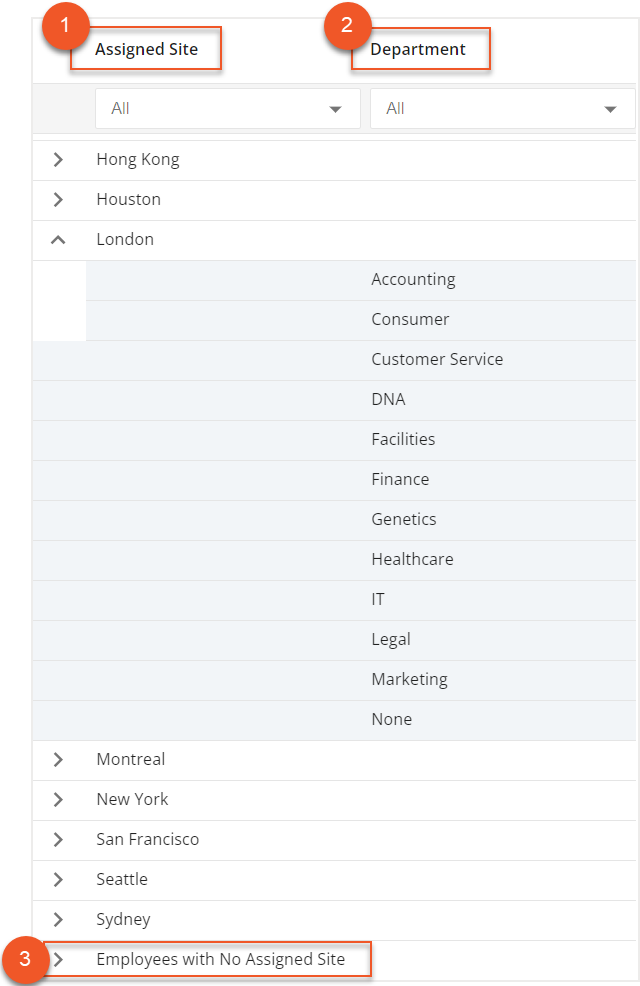
There are three sections of the Summary tab:
Employee Seating Needs (1),
Seating Available (2), and
Total Seat Count (3).
 Employee Seating NeedsSeating AvailableTotal Seat Count
Employee Seating NeedsSeating AvailableTotal Seat Count
Employee Seating Needs
This section is divided into six columns. The first four columns
Office (1),
High Flex (2),
Flex (3), and
Remote (4) show you the total number of employees who are assigned to the seating need by Assigned Site. If you expand the column further, you can also see the number by Department for that site.
The two final columns in the section are for
Unassigned (5) employees - those who do not yet have an assigned seating need - and the
Total Headcount (Total HC) (6), which is for the total number of employees in that site.
Seating needs can be assigned to individual employees on the Employee Detail tab.

Seating Available
This section shows you the different types of seating available in each site. You are able to find totals for six types of seating:
Assignable Seats - Occupied (1), A
ssignable Seats - Vacant (2),
Shares - Assigned (3),
Shares - Available (4),
Bookable Desks (5), and
Free Addressing Desks (6).

Note that Shares-Assigned is the number of people assigned to a shared desk. Shared-Available is the number of spaces within shares left to allocate to other employees.
Total Seat Count
This section shows you the total number of active and inactive seats for the site.
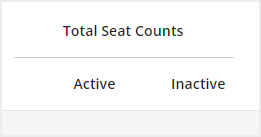
Employee Detail
The Employee Detail tab shows a list of all your active employee records with key information about their seating needs, current seating arrangement, and Neighborhood assignments.

Using the
dropdown menus and
filter tools at the top of the report, you can adjust the report settings, find seating needs mismatches, or view different pages of the report.

Using the
Show All dropdown menu, you can highlight mismatches between employees' assigned sites and their occupied seat or neighborhood.
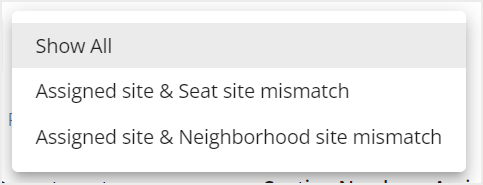
When viewing the Employee Detail tab, you have the option to make changes to an employee’s seating needs or their assigned site. You can also see desk booking usage based on these groups in the Booking Usage and Capacity reports.
Seating Needs
Assigned Site
Seating Needs
The Seating Needs column allows you to establish if an employee will need to be in any of the following seating needs categories. These category titles are established by default, but may be renamed at your convenience, according to the types of seating needs that your company has.
The table below provides a summary of the seating needs types.
| Category | Explanation |
|---|
| Office | Full-Time Office Attendee |
| High Flex | High Flex |
| Flex | Flex |
| Remote | Remote |
The different seating needs categories allow you to track and report on the needs of your employees and use the information to optimize your workspaces. To make changes to an employee’s seating need, select the
edit icon in the top-right corner of the report.

Locate the employee you want to adjust the seating need for. Then double-click on the Seating Need column in the employee’s line of the report. A dropdown with a list of available seating needs is displayed. Select the appropriate
seating need.
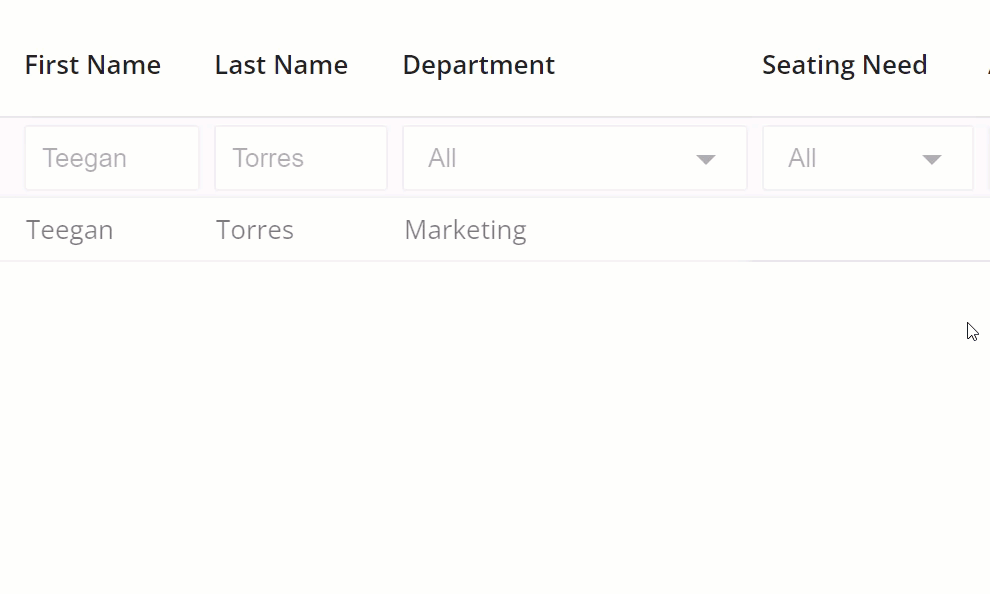
Then select
Save to save your changes.

If your company updates employee information by syncing your HR system with OfficeSpace, you have the ability to update the seating needs of your employees during this sync. If you make changes to a seating need within your HR system, this change should automatically update for the corresponding employees in the Seating Needs report.
Note that the seating need category titles in your HR system must match the seating need categories within the report. If there is a mismatch with the category title, the seating need will not update in OfficeSpace during the sync and the column will be left blank.
Assigned Site
The report allows you to assign an employee to one of your company’s sites. Assigned sites are helpful in organizing your employee records and can be used in reporting. As well, the assigned site data is used in determining the number of employees that are associated with your sites. For more information on associated employees and how that benefits your reporting metrics, check out the
Workplace Trends Dashboard article.
To make changes to an employee’s assigned site, select the
edit icon in the top-right corner of the report.

Locate the employee you want to assign to a site. Then double-click on the Assigned Site column in the employee’s line of the report. A dropdown with your company’s different sites is displayed. Select the appropriate
Site.
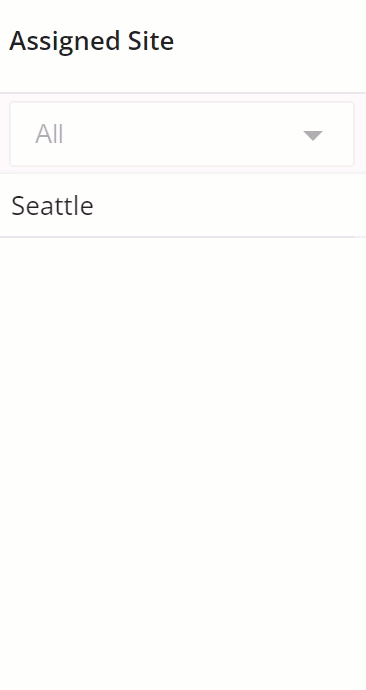
Then select
Save to save your changes.

Saving Time with Seating Needs Report
There are lots of great time-saving scenarios for which you can use the Seating Needs Report. You can use this report to identify which of your employees will be in the office the most. You may consider assigning them to a move-scheduled seat so they have some place they can work in consistently.
Alternatively, you can use this report to identify people who may come into the office less frequently. For example, if an employee is primarily remote and they currently occupy an assigned seat, you may be able to free up that space and give the employee a more flexible seating option.



